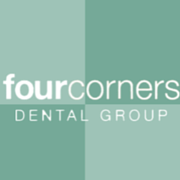
If you notice that your teeth look unusually long, you may have gum recession. A symptom of periodontal disease, this condition requires prompt treatment from a dentist. The guide below provides an overview of this problem to help you restore the look and health of your smile.
What Is Gum Recession?
Gum recession is a symptom of periodontal disease, an inflammation caused by bacteria. Primarily a result of poor oral hygiene, it occurs when plaque, a buildup of bacterial deposits, accumulates around the gum line.
Gingivitis often occurs first. An early stage of periodontal disease, it causes redness, swelling, and bleeding around the soft tissue. Over time, the irritated gums can start to pull away from the teeth crowns, exposing the roots. Since roots don’t have protective layers of enamel, you may experience severe sensitivity in the affected areas.
What Increases the Risk of Gum Recession?
 Brushing aggressively can irritate the gums, injuring the area where they meet the teeth. Grinding and clenching the jaw, a condition known as bruxism, puts excess pressure on the tissue as well.
Brushing aggressively can irritate the gums, injuring the area where they meet the teeth. Grinding and clenching the jaw, a condition known as bruxism, puts excess pressure on the tissue as well.
Those with family members who have had gum disease are more prone to it. Trauma to the mouth from sports injuries, falls, and ill-fitting partial dentures can lead to recession at the point of contact.
How Do Dentists Treat This Condition?
If the issue is caused by periodontal disease, a dentist first removes plaque accumulation around and below the gum line through a process known as scaling and root planing. First, they clear the hardened plaque with a scaler, working up to the gums. The planing portion of the procedure involves smoothing out the tooth roots so the soft tissue can reattach to the crown. These steps require local anesthetics and may involve more than one appointment.
If there isn’t enough soft tissue in the affected area, the dentist may need to perform a gum graft. During this treatment, the professional removes tissue from another part of the mouth, such as the palate, and places it over the exposed roots. The graft covers any sensitive areas and promotes new tissue growth.
A new, minimally invasive option is laser dentistry. Through this process, the dentist applies a laser to the affected area to remove harmful bacteria and inflammation. Without harming healthy tissue, the beam slows or stops recession, allowing the site to recover without the need for traditional surgical procedures.
If you think you may have gum disease, turn to Four Corners Dental Group. With locations in Anchorage and Wasilla, AK, their friendly team offers a range of solutions, including laser dentistry. They pride themselves on providing affordable care in a comfortable, relaxing environment. Call (907) 258-3384 to make an appointment in Anchorage, or visit their website to learn more about their offerings.
About the Business
Have a question? Ask the experts!
Send your question

